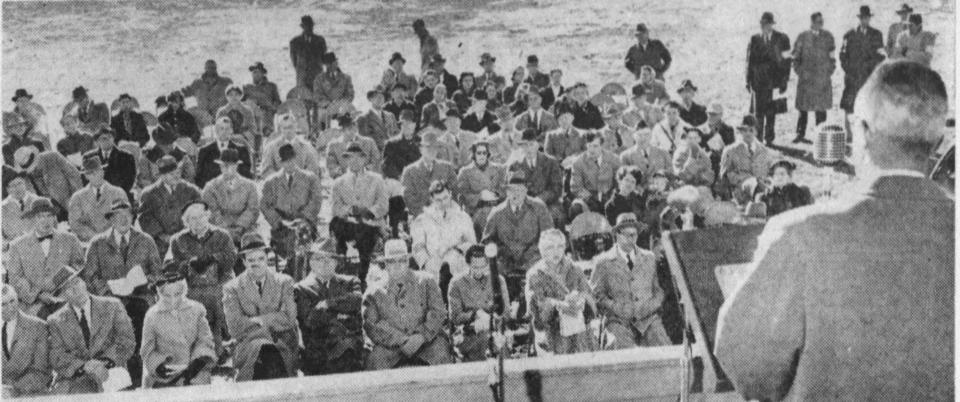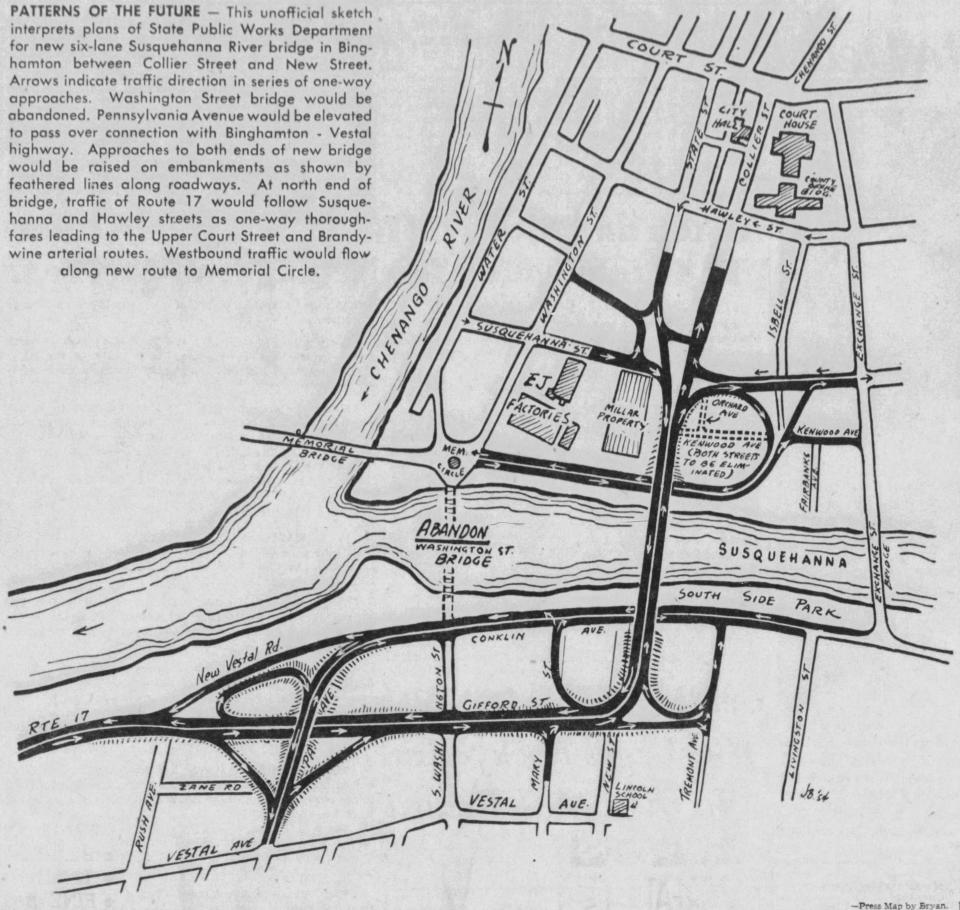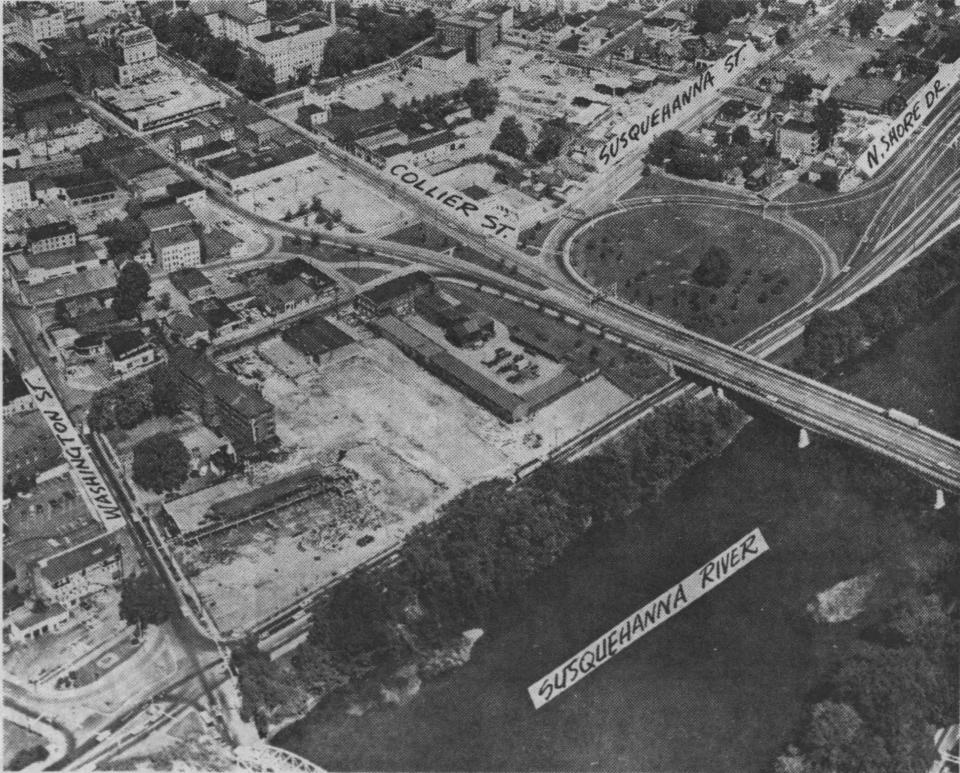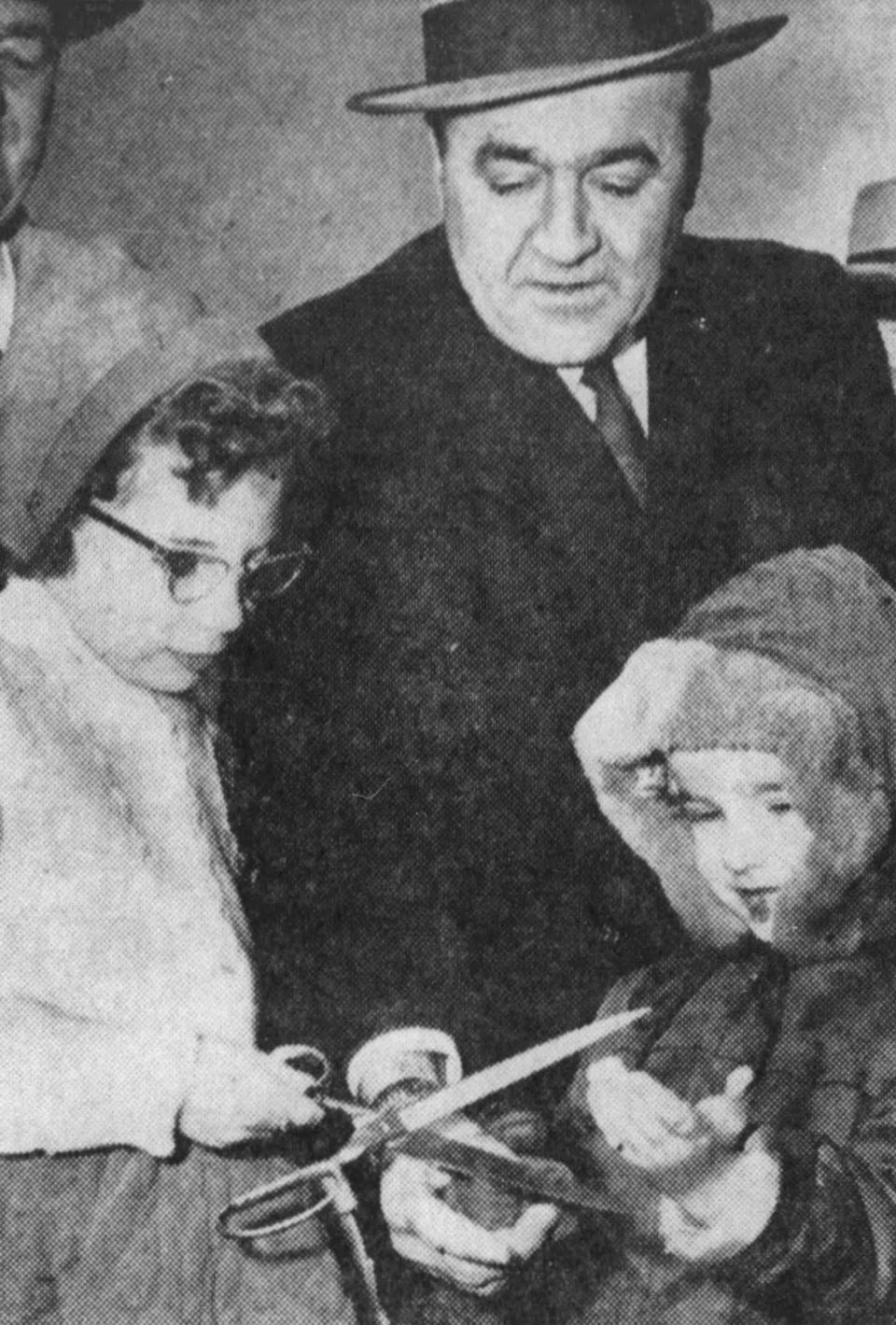How the State Street bridge got its name: Broome County history
“What’s in a name? That which we call a rose by any other name would smell as sweet.”
It is a well-known phrase from William Shakespeare’s Romeo and Juliet. There is truth in that statement. Of course, if we called a rose a skunk, it might affect our perception. Nevertheless, changing one name to another does not change the essence of the entity.
This is also true for structures as well as flowers. In 1956, a new piece of the infrastructure of the City of Binghamton opened. On Monday, Nov. 19, 1956, the Collier Street Bridge opened to vehicular traffic. Don’t you mean the State Street Bridge? It is a good question, and the answer is yes and no. In the midst of the 1950s, plans were drawn to add a new bridge across the Susquehanna River between downtown and the south side of the city. A new bridge was proposed that would increase the number of cars that could pass – a new bridge to replace the aging Washington Street Bridge built in the 1880s.

This was the moment in time when the concept of modernization of downtown began, using federal funds to improve the infrastructure and new plans for a growing population. The beginnings of the Vestal Parkway indicated a new connection to Binghamton was needed. What was designed was a 642-foot span with six lanes of traffic that would connect Collier Street with New Street on the south side of the river. The development of expansion plans for the bridge to connect with that new Parkway were already made before the bridge was completed, but would require some years before being completed.
More: 150-year-old Binghamton business directories offer glimpse of life in the 19th century

The new bridge cost $6,400,000 to complete, and its construction was not without controversy. Aside from the idea of closing the old Washington Street Bridge once the new bridge opened (which did not happen for some time), it required plowing through many residences and business to make a new path for the roadway to follow. In addition, it was the point when the creation of North Shore Drive and the loop system around that part of downtown would pave the way for the construction of the Government Plaza in the 1960s.

This new arterial system was supposed to relieve congestion of downtown traffic. While it did, the construction of that system altered the makeup of the downtown and South Side areas. Mayor Donald Kramer of Binghamton warned that the completion of the bridge was only one step in a longer process and some residents might misunderstand how it would develop. Those were wise words, as the days of Urban Renewal made the new bridge not obsolete, but confused.
More: These were the most popular dog names 100 years ago: Mohawk Valley history

I say confused because of its direction. While the bridge connected Collier Street to the South Side, there was also a connection off of the bridge to State Street. An aerial photograph shows the bridge did double duty for a few years. That was complicated by the construction of the Government Plaza which replaced four blocks of structures with the new centers of government for the city, the county and the state.

Once completed, the traffic from the Collier Street connection became less, and the connection using State Street became greater. By the late 1970s and early 1980s, there was a new movement. Not a movement for a new bridge, but a movement for a new name for the bridge. The direct connection to Collier Street was lost, and many felt it should no longer be called Collier Street Bridge. After much debate over what the name of the bridge should actually be, and determining that it was not named in honor of a person, but, rather, indicated the street to which it was connected – a change was proposed.
Councilman Francis Kattell of Binghamton worked to have the state redesignate the bridge as the State Street Bridge. It was 1980 – 16 years after the bridge had opened, and several years since the Collier Street terminus was eliminated. While some complained, most people made the rather easy switch to the new name. Now State Street instead of Collier Street. After all, a rose by any other name wrote the Bard of Avon. Indeed.
Gerald Smith is a former Broome County historian. Email him at historysmiths@stny.rr.com.
This article originally appeared on Binghamton Press & Sun-Bulletin: How the State Street bridge got its name: Broome County history

